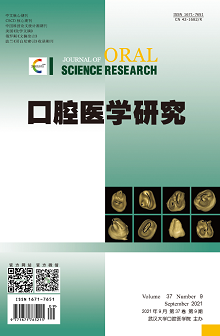|
|
Preliminary Study of Common Oral Diseases Recognition in Oral Pantomography with Deep Learning
Pakezhati·SEYITI, WANG Tiemei, XU Zineng, BAI Hailong, DING Peng, LIU Shu, TENG Yuehui, FENG Yinglian, WANG Rong, SHAN Shan, ZHONG Shuangze
2021, 37(9):
845-849.
DOI: 10.13701/j.cnki.kqyxyj.2021.09.016
Objective: To develop an artificial intelligence aided diagnosis system for common oral diseases based on deep learning algorithm and oral pantomography image analysis. Methods: A total of 2000 oral panoramic radiographs were selected from PACS database of our hospital to establish the data set (1400 for training set and 600 for test set). Using the deep learning algorithm based on convolutional neural network, through the algorithm design, model training, and validation, the intelligent image diagnosis model “PanoNet” for common oral diseases was constructed. The image segmentation and recognition of different oral diseases were performed by six sub network models. Results: The accuracy, sensitivity, and specificity of PanoNet were higher than 85% (kappa>0.81) in the identification of permanent dentition, dental caries, periapical periodontitis, impacted teeth, implants, and postoperative repair of dental defects. In the classification of alveolar bone resorption, the above indexes were 76.50%, 75.25%, and 79.00%, respectively (kappa=0.44). Conclusion: Based on the deep learning algorithm of convolution neural network, PanoNet can effectively identify the above common oral diseases, which reflects the application value of artificial intelligence in the image diagnosis and preliminary screening of common oral diseases.
References |
Related Articles |
Metrics
|

